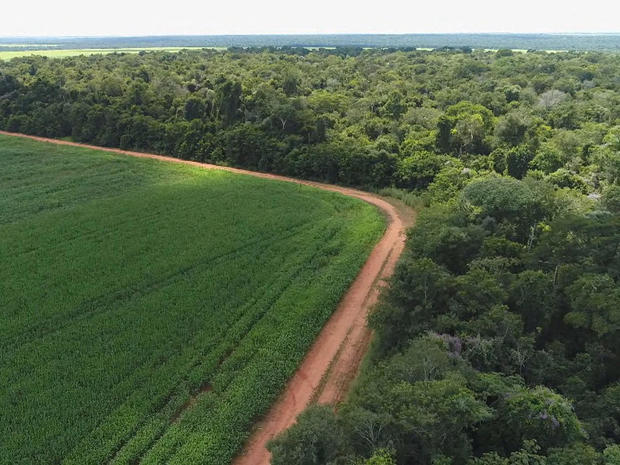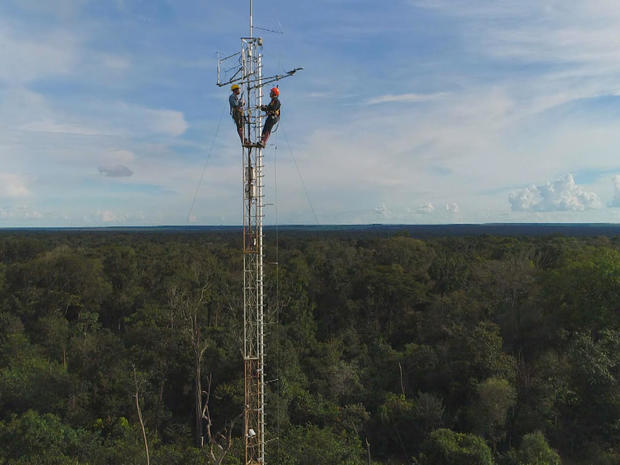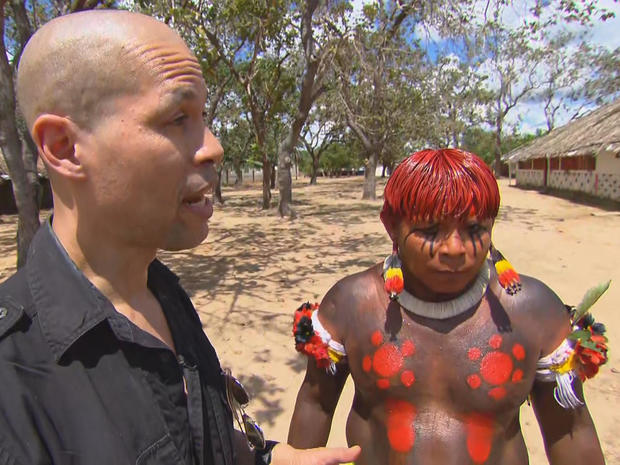Earth Matters: Behind the battle against deforestation in the Amazon rainforest
Tanguro Ranch, a 200,000-acre industrial farm in the remote Mato Grosso region of Brazil, may not be what you imagine as the Amazon, but it sits right up against massive walls of dense rainforest. In essence, it's the last line of civilization, and the frontline in the battle against deforestation.
Mike Coe is a soldier in that battle: "This is a perfect laboratory to work. It's a very large farm, it's half-forest, and half-farmland, so we're able to set up different experiments in both farmland and forest to see what the differences are."
As the head of the Woods Hole Research Center's science station based here at the ranch, his weapons are data. "If you cut down the forest, you're just adding to global warming. You're doing it by increasing the amount of carbon that goes into the atmosphere, and you're doing it by just heating up the surface."
For the past 20 years, environmentalists in Brazil thought they were making progress as the rate of Amazon deforestation slowed way down. But now, activists are noticing it's starting to speed up again. Combine that with a newly-elected Brazilian president who is openly critical of environmental priorities, and environmentalists are seriously concerned.
Since the rise of large-scale, industrial farming here in the past 50 years, scientists like Coe estimate that almost 20 percent of the original Amazon has been deforested – cut down to make way for agriculture.
To measure the impact of all those lost trees, you've got to get above it all .... and that's where scientist Paulo Brando works. A tower helps him observe and measure how forests "breathe."
"First thing you notice when you're 130 feet above the Amazon is how breathtaking the view is from up here," he said. "But for scientists, it's not about the view, it's about the science.
"That tree is probably three or four tons of carbon that it's storing. So, they assimilate carbon that otherwise would be in the atmosphere."
"What happens if these trees are cut down and that carbon is released into the atmosphere?" asked CBSN's Vladimir Duthiers.
"This carbon goes into the atmosphere, and contributes to heat-trapping in the atmosphere," Coe replied.
There's as much carbon captured and stored in all the trees of the Amazon as the amount the entire planet has emitted over the past 10 years. Cut them down, and we effectively double the heat-trapping gases of the past decade.
But the trees are more than just carbon containers. Brando said, "In some regions of the Amazon, about 30 percent of the rain depends on the trees. [It rains] because of the trees."
They're a key part of the global weather cycle: a tree soaks up water from the soil, it evaporates off the treetops, and creates the life-giving rain that supports millions of people downwind.
Coe said, "I prefer to call it the air conditioner of the Earth, because all that water rains out somewhere else, so without that recycling of water, you've got a lot less rain, you've got a lot hotter planet."
Coe's data shows that, with fewer trees, the dry season around here has expanded by three-and-a half weeks in the past 50 years. The problem is that the rain forest being deforested is not being re-forested. "Each year there's more being taken out, and there's none being replaced, so that's actually the problem," Coe said.
He and his team may have discovered a solution, by relying on the jungle's original inhabitants. Using field data and remote cameras, the Woods Hole team has learned that large mammals actually are the best fertilizers.
"They are great at eating seeds and then dropping them somewhere else," Coe said. "These animals are playing a big role in getting new trees to grow."
Also playing a big role: indigenous human populations who live in the area. With generations of climate knowledge over a huge swath of territory, they're the people most immediately affected by recent droughts and previously-unheard-of forest fires. One resident told Duthiers through an interpreter that his grandfather recognized there were changes happening.
And they might also have some of the answers.
Coe said, "It's going to be really important to engage indigenous people in this whole discussion of how can we make a landscape that works for everyone?"
The native communities in the Amazon have long been protected by the Brazilian government, but that, too, is threatening to change. Brazil's new president, Jair Balsonaro, recently shifted power over them from the government's official indigenous rights agency to the agriculture ministry. Some see that as just another attempt to exploit the rain forest they call home.
Check out our Earth Matters blog for more in our Earth Day series!






